Cryotherapy Facial: What Is It, Benefits, Risks, & How It Works
A deeper look into this revitalizing therapy and its positive impact on your skin.
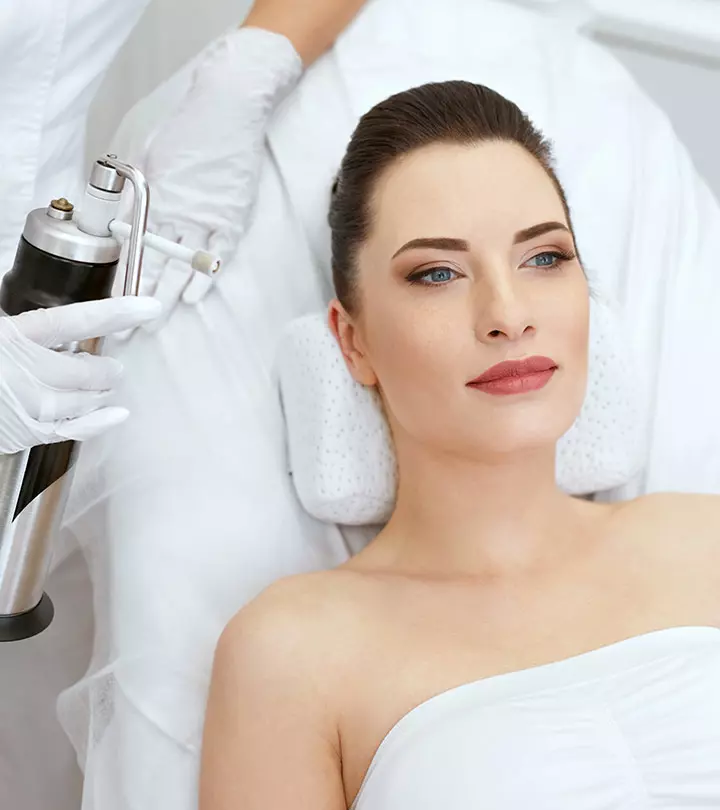
Image: Shutterstock
Botox is a term that most people are familiar with. But, have you ever heard of frotox? This is the term given to cryotherapy facial by the beauty industry. Cryotherapy facial involves exposing your skin to sub-zero temperatures. It is the trendiest skincare treatment on the market right now, and celebrities are crazy about it. In this article, we have discussed all about this treatment, its benefits, side effects, and much more. Keep reading!
In This Article
What Is Cryotherapy Facial?
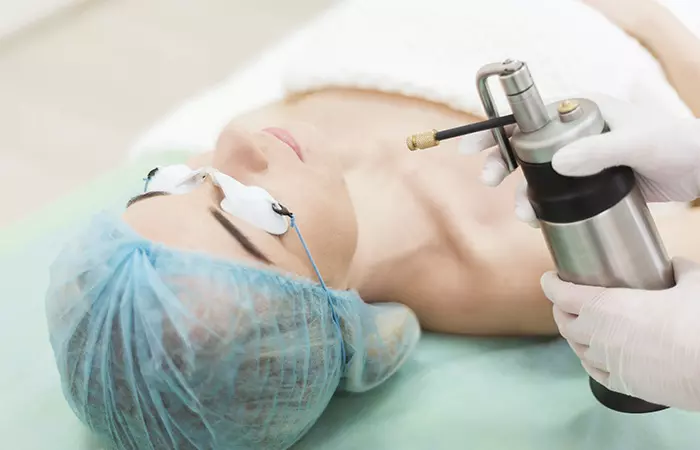
Cryotherapy means ‘cold therapy.’ It is a treatment in which your body or a body part (such as your face) is exposed to subzero temperatures for a few minutes.
This technique was first developed in Japan in 1978. The Japanese rheumatologist, Dr. Toshima Yamaguchi, is credited with developing this technique. He primarily used this technique to treat rheumatoid arthritisi An inflammatory disease that affects the joints when the immune system attacks the body’s own healthy cells. . Soon, the benefits of cryotherapy moved beyond arthritis. It proved beneficial for treating inflammation, psoriasisi A skin condition triggered by infections or stress that causes itchy rashes on the knees, elbows, or scalp. , and tissue pain It is also used as an anti-aging treatment that is effective in revitalizing the skin.
Cryotherapy can be done on just one particular area of your body or your entire body. When it is done on the face, it is called ‘cryotherapy facial,’ and when it is done on your body, it is called ‘whole-body cryotherapy.’ The way it is administered depends on the specific area of the body you are addressing.
In whole-body cryotherapy, your body is enclosed in a small cryo spa chamber. You need to stand inside the chamber that surrounds only your body, leaving an opening for your head. Once your body is inside the chamber, its temperature is dropped to anywhere between -200° and -300° Fahrenheit. The aesthetician blows a cold stream of air that is made of vaporized liquid nitrogen. Your body is exposed to that temperature for just a few minutes
When exposed to freezing temperature, your body thinks that it’s freezing. This triggers the natural healing mechanism of your body. It accumulates blood in the core of your body to keep it warm. This expands your capillaries, and the white blood cells start working at a faster pace to protect you. During those minutes, your brain also releases hormones, such as adrenaline and endorphins, to stimulate your organs. This reaction facilitates cell rejuvenation, boosts your immune function, and promotes self-healing.
 Fun Fact
Fun FactCryotherapy facial does not involve such a chamber. Here is what you can expect during a session.
Key Takeaways
- In cryotherapy facial, the face skin is exposed to sub-zero temperatures for short durations.
- Temperature between -200° and -300° Fahrenheit is used, and one session lasts about 2-3 minutes.
- This facial helps combat acne, improve blood circulation, ease pain, and reduce migraines.
- However, frostbites, redness, ice burns may occur in a few sensitive individuals.
How Cryotherapy Facial Works: What To Expect During A Session
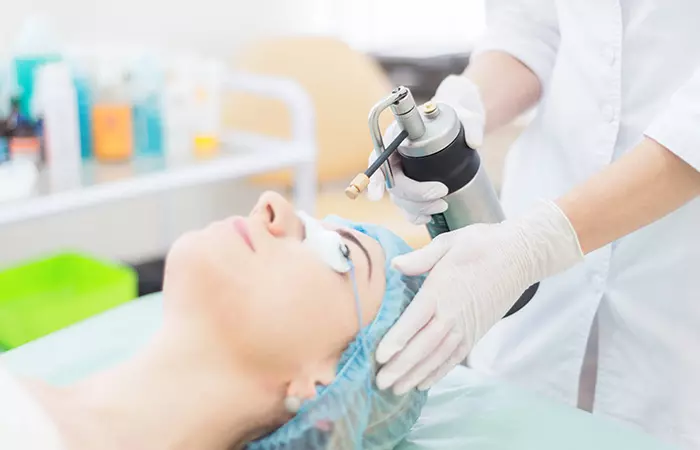
Different doctors might follow slightly different processes for cryo skincare, but overall, the approach remains the same.
- Before the treatment, your face is thoroughly cleansed and massaged. This helps in lymphatic drainage and elimination of toxins and tension from your facial muscles.
- Your face might be exposed to steam. If you have any breakouts, they will be extracted with a quick session of microdermabrasion.
- In some places, your face may be exposed to different light frequencies to aid repair, kill bacteria, and boost collagen production. This helps in improving your skin’s health.
Now, the cryotherapy session begins.
- Your eyes are covered with protective goggles.
- A cold blast of liquid nitrogen is pumped all over your face using a tube attached to the cryotherapy machine. The nozzle of the tube has lasers that measure the temperature of your skin continuously.
- The tube is continuously moved all over your face. This is to ensure that no particular area of your face gets too cold.
A cryotherapy facial session lasts for 2-3 minutes. Once the process is over, your safety goggles are removed. In many places, a cryotherapy session is followed by other spa facial treatments. You may receive red LED light therapy (to increase skin radiance), a facial massage, and a hydrating mask to boost your skin’s health. Immediately after the procedure, your skin will feel tighter and smoother.
For optimal results, you should also follow some aftercare:
- Avoid touching your face for a few hours after the session to prevent irritation.
- Keep your skin moisturized with a gentle, hydrating face cream.
- Stay away from direct sunlight or tanning beds for at least 24 hours.
- Drink plenty of water to help your skin recover.
- Avoid harsh skincare products, like exfoliators, for a couple of days.
- Don’t apply makeup immediately after the treatment to let your skin breathe.
Whether you are opting for just a facial or a full-body session, cryotherapy offers multiple benefits. Let’s explore them in the next section.
Benefits Of Cryotherapy Facial For Skin
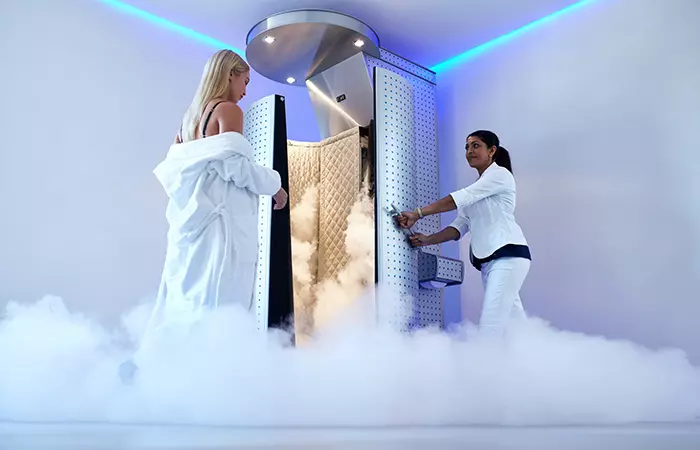
1. It Helps Improve Atopic Dermatitis Symptoms
A 2008 study involving 18 adults with mild to moderate levels of atopic dermatitisi A skin condition that causes itchiness, dryness, and inflammation in your arms and knees due to an irritant or allergen. examined the efficacy of cryotherapy in reducing AD symptoms. Most of the participants experienced improvement in their condition. However, three of them complained of mild acral (areas of limbs, ear, and nose) frostbite. Overall, the subjects regarded the process as pleasant and were willing to follow the course of treatment (1).
2. It Helps Reduce Acne
A study done on mice found that exposing the sebaceous glands to a temperature of -8° Celsius reduced the number of sebocytes (sebum-producing cells), thus preventing excessive sebum production
(2). Controlled sebum production in humans can be helpful in treating acne.
3. It Improves Blood Circulation
Cryotherapy can give you the glowing skin you desire. When you undergo a cryotherapy facial, the intensely cold air makes your blood vessels contract and then expand. This leads to increased blood flow to your skin and makes it look healthy and radiant.
4. It Tightens Your Skin Pores
The cold temperature of cryotherapy promotes pore minimization by tightening them. This prevents the accumulation of dirt and bacteria in your pores.
Jewel Hazelton, a digital marketing expert and lifestyle blogger, shared her experience on her blog after trying cryo facial for the first time: “There are no extractions in this facial or deep cleansing of the skin during the process. However, post-facial, I noticed a brighter skin tone, reduction in eye bags, tightening in the skin, (and) a natural glow (i).”
Other Benefits Of Cryotherapy
1. It Eases Pain
Cryotherapy is mainly used by athletes to treat muscle spasms and injuries. When your body is exposed to cold, it numbs the irritated nerve and helps in easing acute injuries and swelling. The cold also helps minimize inflammation, thus treating bruises, strains, and sprains (3).
2. It Eases Migraine Symptoms
A study found that cold therapy could ease migraine symptoms effectively.
The study involved 101 patients (of which only 55 participants were included in the data analysis) with a migraine headache targeting their carotid arteries at the neck. The recordings were measured at various time intervals, such as during the onset of pain, after 15 minutes, after 30 minutes, and after 1 hour. And 77% of the participants said that the cold therapy helped in easing the pain (4).
Although the study claims that cryotherapy helps with migraine, the FDA does not have any evidence to support this claim (5).
Cryotherapy facial has many benefits, but it also comes with its fair share of risks. The U.S. Food and Drug Administration hasn’t yet cleared cryotherapy as a potential treatment option for many skin and health conditions. The risks and side effects of cryotherapy are discussed below.
Side Effects And Risk Factors Of Cryotherapy
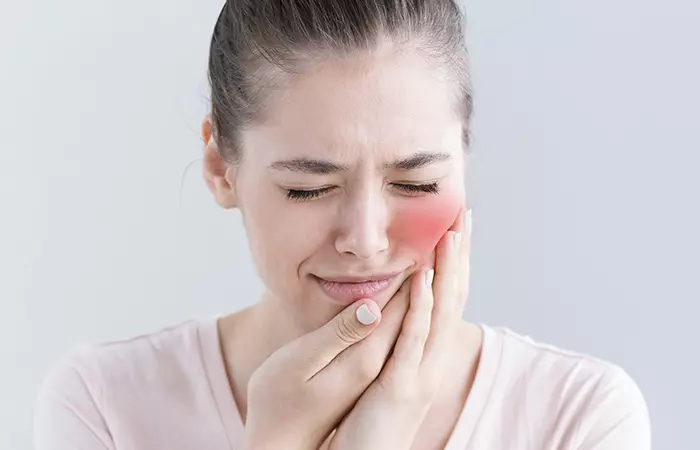
Anna Ghambaryan, a scientific reviewer at FDA, says that asphyxiation is the most significant risk posed by whole-body cryotherapy. She states that the amount of nitrogen in an enclosed area may cause oxygen deficiency, which can lead to anemiai A condition in which blood lacks enough healthy red blood cells to carry oxygen to the tissues in the body, causing fatigue and dizziness. , and lung diseases.” ] and loss of consciousness (5). Other potential risks include:
- Frostbite
- Ice burns
- Numbness and tingling sensation
- Redness
Also, avoid cryotherapy if you have:
- Respiratory issues
- Cardiovascular issues
- High blood pressure
- History of seizures
- Metal implants in your body
- Bleeding disorders
- Anemia
- Or, are pregnant
You may also take a few precautions that may reduce potential risks:
- Consult a doctor if you have any medical conditions like cold sensitivity or circulation problems.
- Don’t wear makeup or heavy skincare products on your face before the session.
- Drink plenty of water to keep your skin hydrated.
- Try to avoid sun exposure or tanning right before your session.
- Make sure your skin is clean and free of lotions or oils.
- Let the practitioner know if you have any allergies or skin conditions.
 Quick Tip
Quick TipWho Should Try A Cryotherapy Facial?
Cryotherapy offers relief to those dealing with chronic pain, recovering from injuries, or simply seeking respite from fatigue and stress. Studies confirm its effectiveness in alleviating symptoms of inflammatory conditions, particularly among athletes; it also contributes to swift post-exercise recovery (6). It’s a low-risk addition to chronic pain management, although individual health considerations are crucial, and ongoing research aims for a more comprehensive assessment. If you are looking to uplift your mood, alleviate pain, or hasten muscle recovery, cryotherapy may just be what you need. Beginners can start off with localized cryotherapy or opt for at-home alternatives like ice rollers for effective inflammation management. You can also explore ice for the face, as it has proven effects in reducing inflammation and calming skin.
If you have decided to get a cryotherapy facial, then it is important to know more about the cost as well. Continue reading.
Cost And Accessibility
Cryotherapy facials can vary in cost depending on where you get them. On average, they can range from $75 to $100 per session. The price might be higher in big cities or at luxury skin care centers. They are available at many spas, wellness centers, and even some dermatology clinics. However, they may not be available everywhere, so you might need to check if there is a place near you that offers this treatment. Also, make sure the facility has trained professionals who perform the treatment safely.
Infographic: How To Prepare For Cryotherapy
Cryotherapy and cryo facials have grown in popularity in recent years, with celebs swearing by the chilly beauty treatment for red-carpet preparation and skin-care specialists touting its long list of skin benefits. However, you should know a few things before getting a cryo facial if you are new to it. Check out the infographic below to learn how to prepare for cryotherapy treatment the right way. Illustration: StyleCraze Design Team
Cryo skin therapy is the new trend in the world of skincare, health, and wellness. Cryotherapy facial has many benefits and may promote blood circulation and skin rejuvenation. However, exposing the skin to low temperatures may have many side effects and cause redness and numbness. The FDA still has not cleared the use of cryotherapy for treating skin and other health issues, and further research is required to prove its efficacy. If you wish to go for a cryotherapy facial, it is best to consult a doctor and understand the pros and cons of the therapy and whether you are suitable for it.
Frequently Asked Questions
How does cryotherapy compare to other facial treatments?
Cryotherapy is different from other facial treatments because it uses cold temperatures to help tighten the skin, reduce inflammation, and improve circulation. Unlike facials that focus on cleansing or moisturizing, cryotherapy works by stimulating your skin with cold, which can help with issues like puffiness and dullness.
How long does it take for skin to heal after cryotherapy?
About 1-3 weeks. Anecdotal evidence suggests that mild pain or skin redness experienced after cryotherapy may resolve within 3 days while blisters may take up to 3 weeks to heal.
Does cryotherapy make you look younger?
Possibly. Cryotherapy stimulates collagen production that rejuvenates your skin and makes it firmer.
Can I wear makeup after cryotherapy?
Yes, as long as there are no blisters or redness. You can wash your skin as usual after cryotherapy and wear makeup or other cosmetics.
Experience the power of Cryo-Facial with this informative video. Rejuvenate your skin and reduce wrinkles with this revolutionary treatment.
Personal Experience: Source
StyleCraze's articles are interwoven with authentic personal narratives that provide depth and resonance to our content. Below are the sources of the personal accounts referenced in this article.
i. MY FIRST CRYO FACIAL EXPERIENCEhttps://www.aftersundaydinner.com/blog/my-first-cryo-facial-experience
References
Articles on StyleCraze are backed by verified information from peer-reviewed and academic research papers, reputed organizations, research institutions, and medical associations to ensure accuracy and relevance. Read our editorial policy to learn more.
- “Whole-Body Cryotherapy in Atopic…,” JAMA Dermatology
https://jamanetwork.com/journals/jamadermatology/fullarticle/419737 - “Longitudinal, 3D In Vivo Imaging of…”, ScienceDirect
https://www.sciencedirect.com/science/article/pii/S0022202X15370408 - “Cryotherapy”, New York Chiropractice College
https://www.nycc.edu/webdocs/ic/IQA/IQAFiles/Protocols/Chapter4/Cryotherapy4_1.pdf - “Randomized Controlled Trial…,” Hawai’i Journal of Medicine & Public Health US National Library of Medicine
https://www.ncbi.nlm.nih.gov/pmc/articles/PMC3727573/ - “Whole Body Cryotherapy…,“ U.S. Food & Drug Administration
https://www.fda.gov/consumers/consumer-updates/whole-body-cryotherapy-wbc-cool-trend-lacks-evidence-poses-risks - Whole-Body Cryotherapy in Athletes: From Therapy to Stimulation. An Updated Review of the Literature
https://www.ncbi.nlm.nih.gov/pmc/articles/PMC5411446/
Read full bio of Patrick
Read full bio of Ramona Sinha
Read full bio of Eshna Das
Read full bio of Shiboli Chakraborti






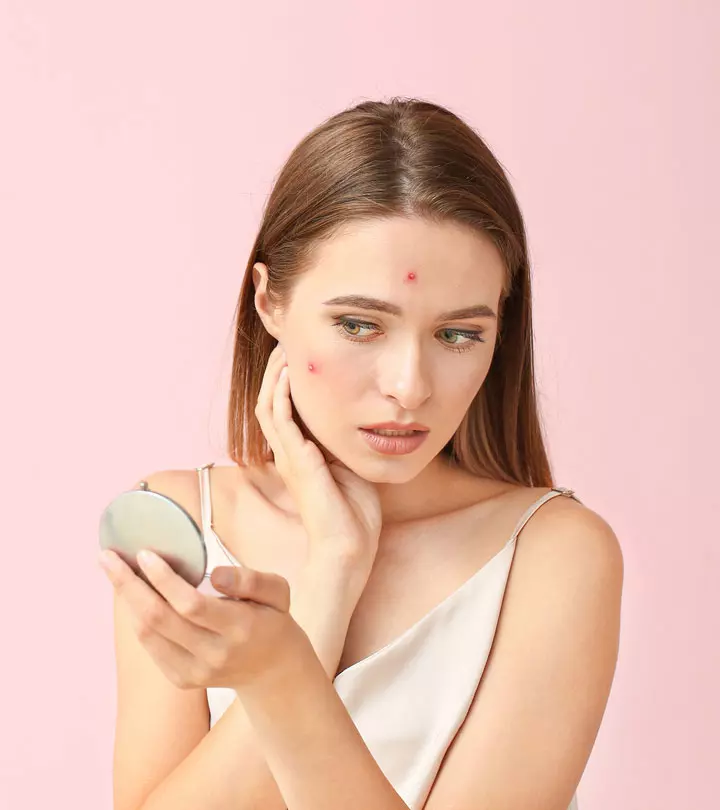

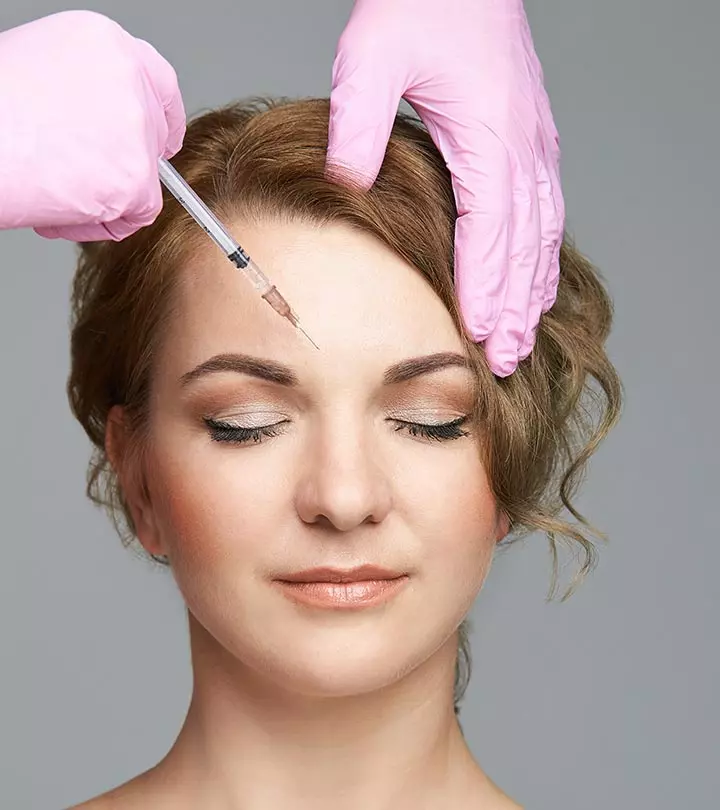
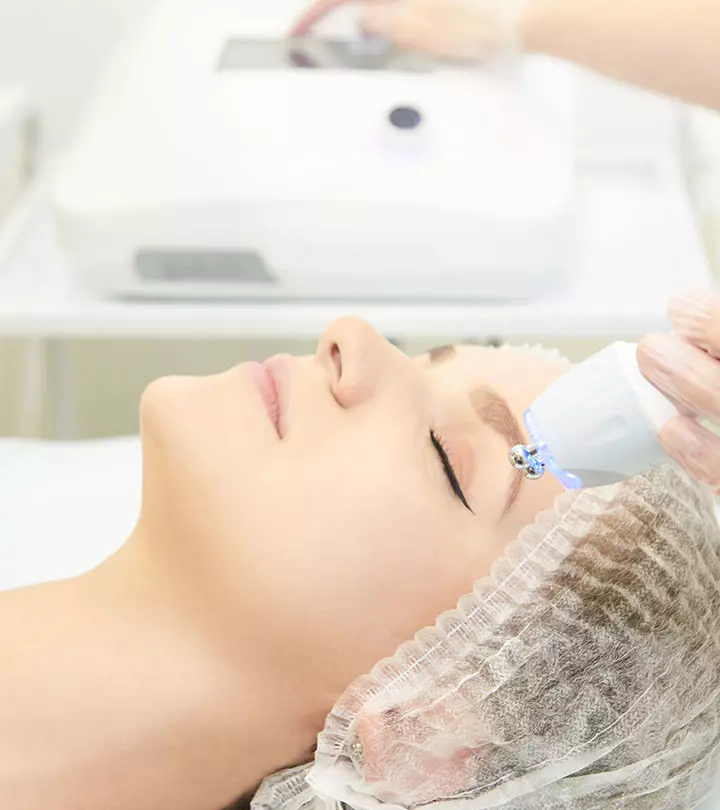
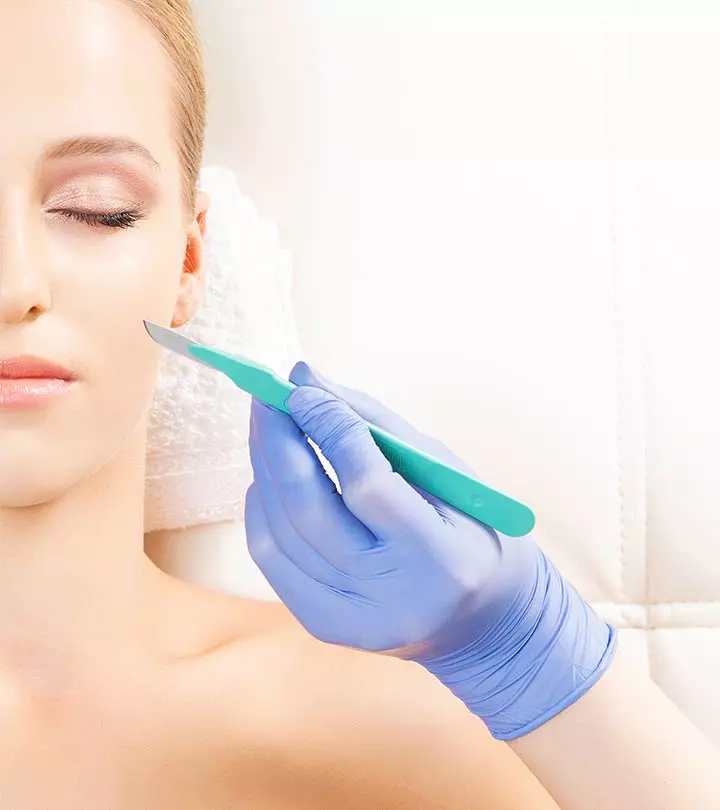
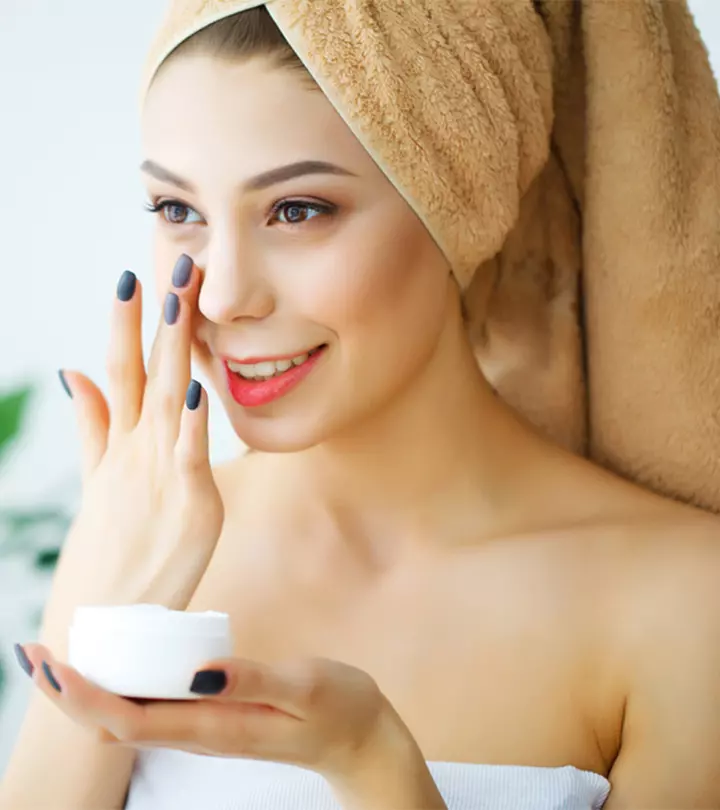

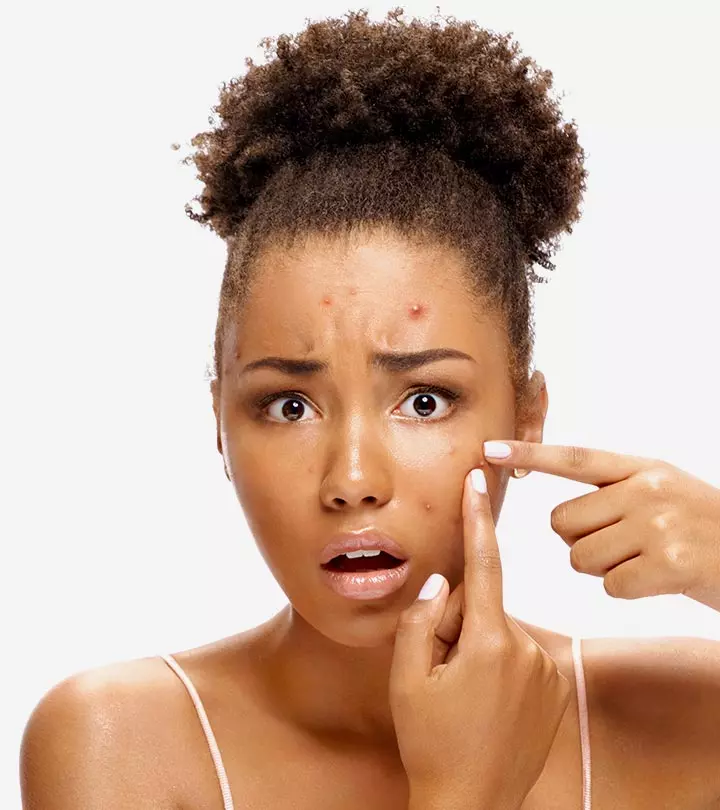
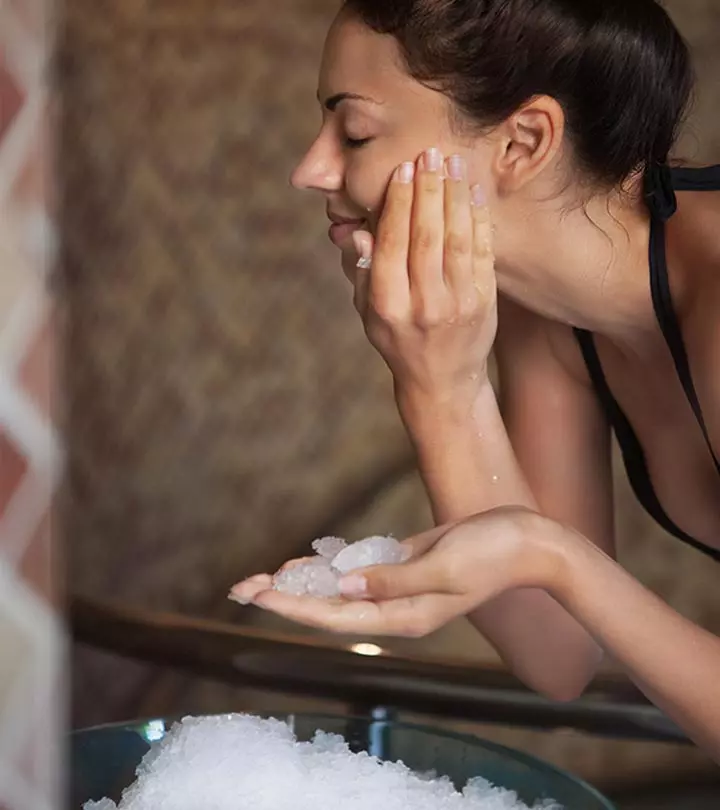

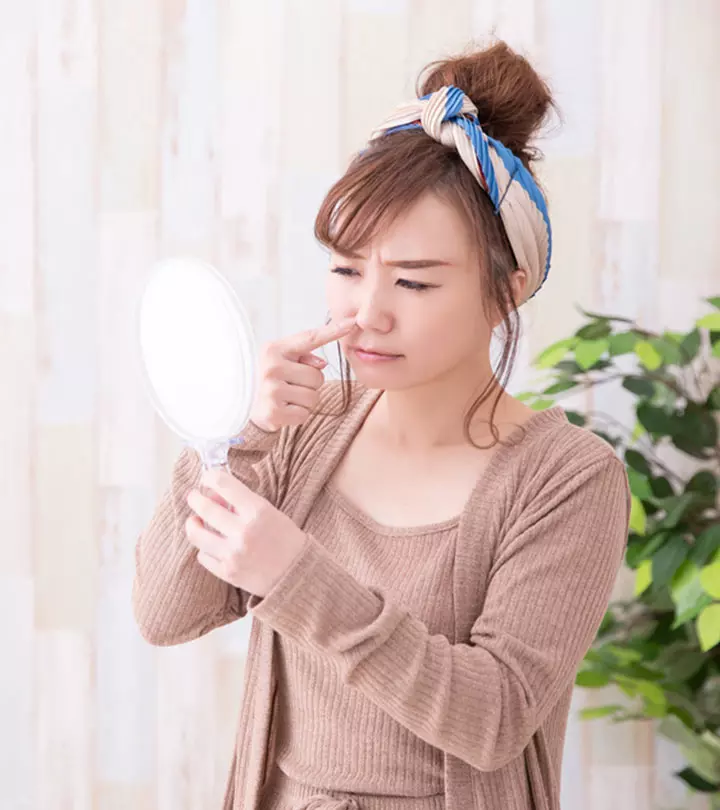
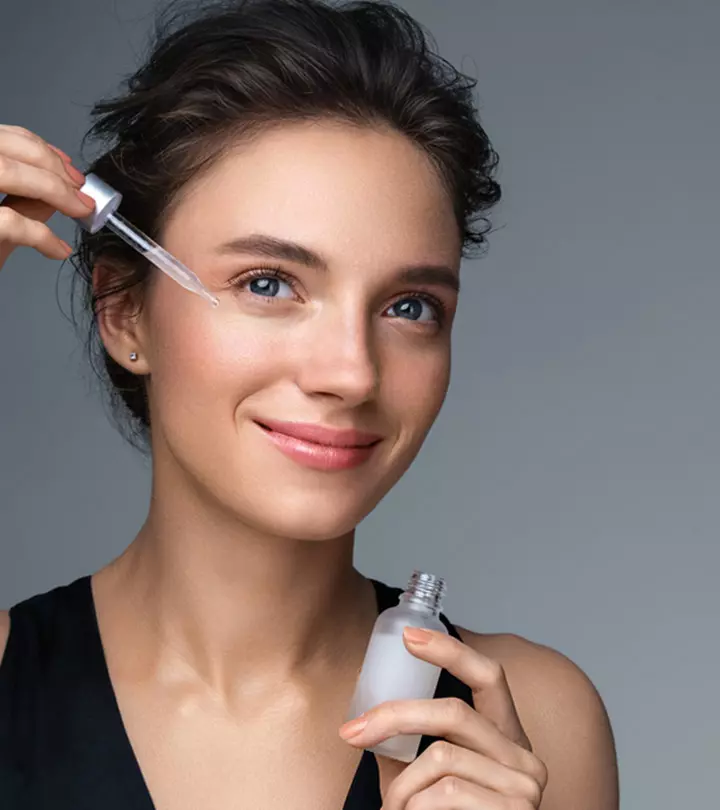
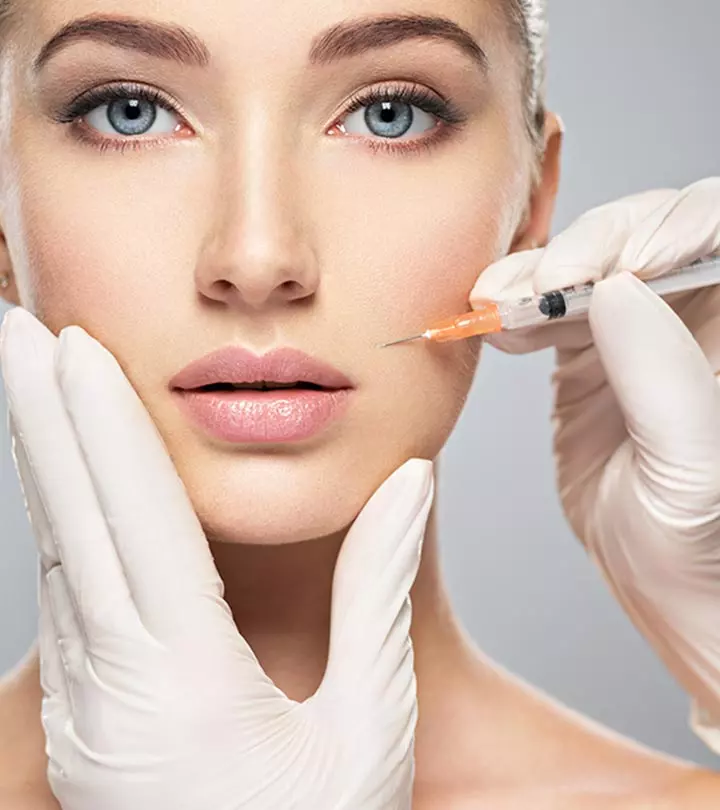
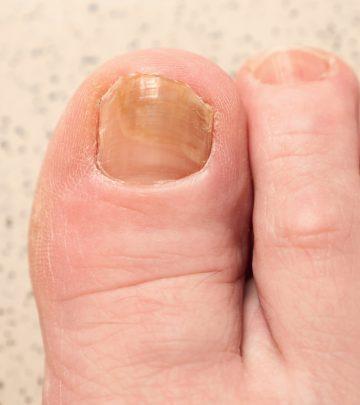
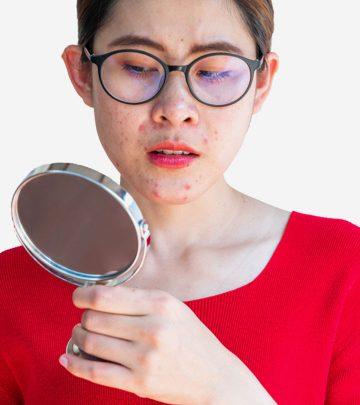
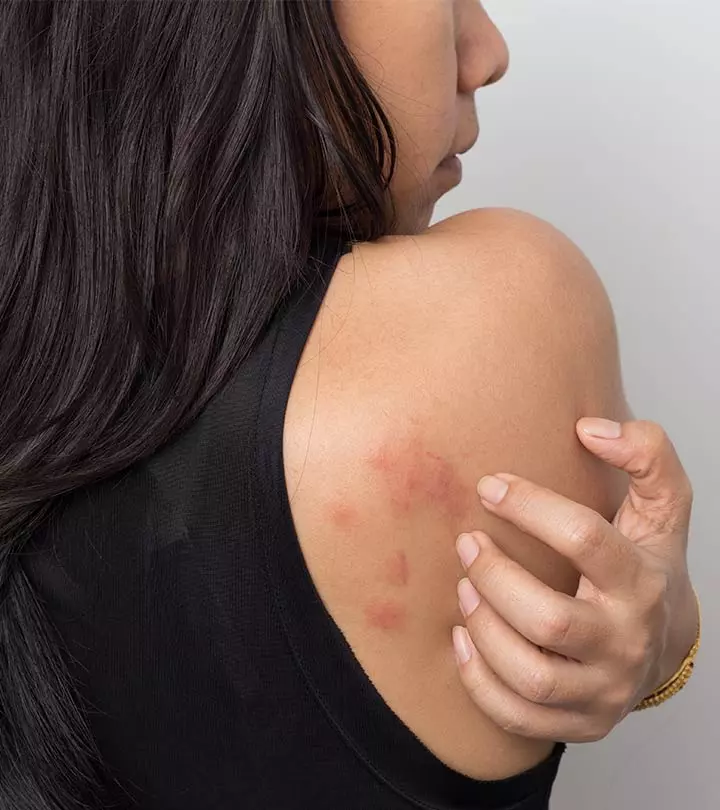
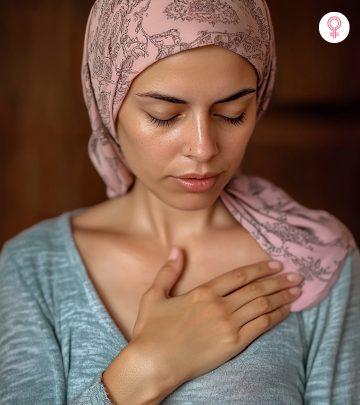
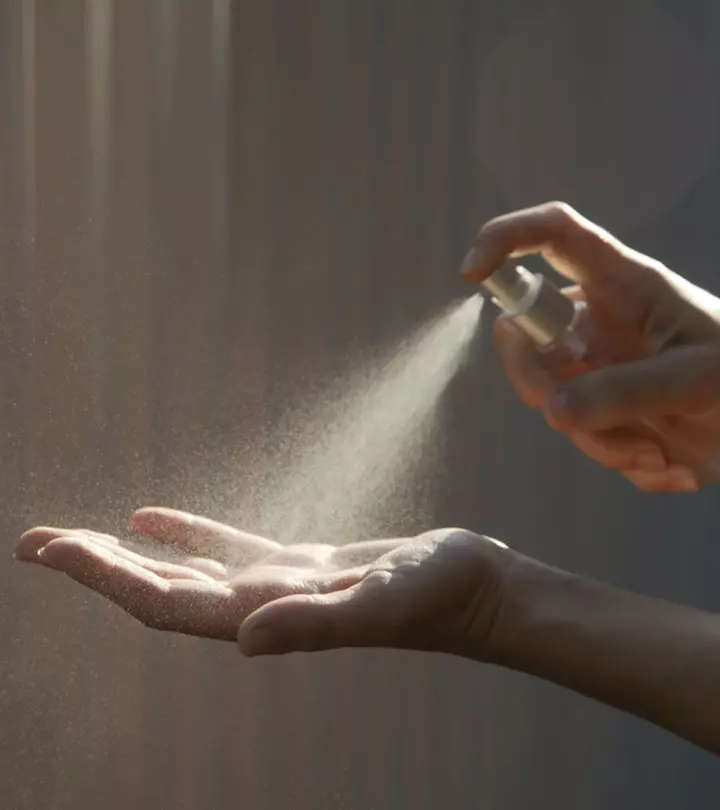
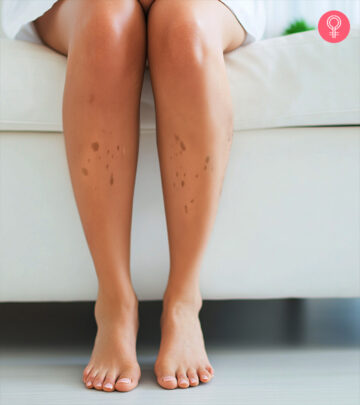

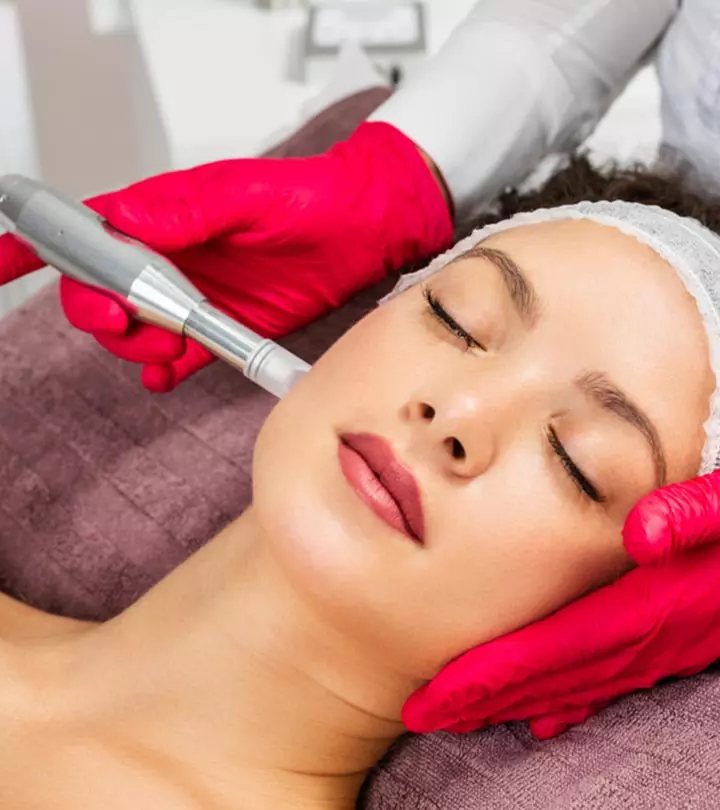
Community Experiences
Join the conversation and become a part of our empowering community! Share your stories, experiences, and insights to connect with other beauty, lifestyle, and health enthusiasts.